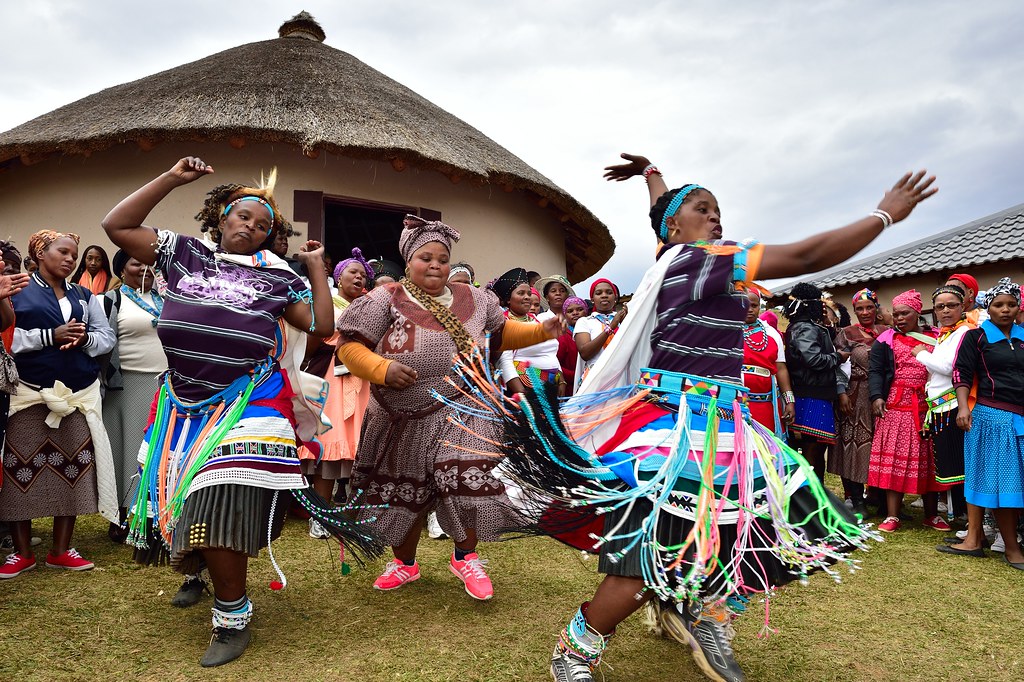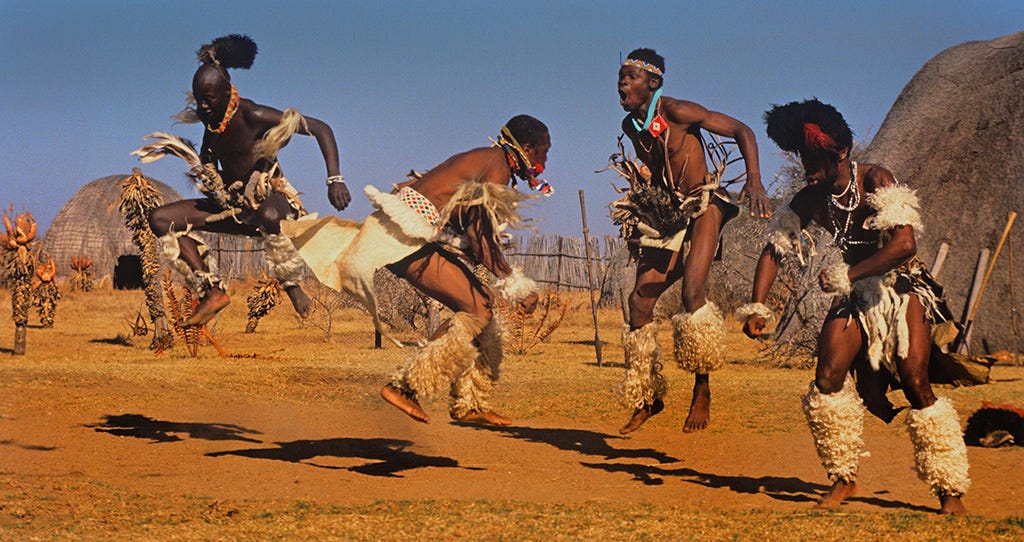Indicators on South African Culture Today You Should Know
Some Known Details About South African Culture Today
Table of ContentsThe 4-Minute Rule for South African Culture TodayA Biased View of South African Culture TodayIndicators on South African Culture Today You Should KnowSouth African Culture Today - An OverviewWhat Does South African Culture Today Mean?What Does South African Culture Today Do?
This follows with vocal singing and drum whipping. The groom and bride then meet the elders and speak about the importance of their union. A matter of significance in Zambian towns is the diing of enjoyed ones. All participants of the village put money, time and effort with each other for the funeral of the deceased.Songs and dancing is a really crucial aspect of the Zambian society. The different tribal units have their own dance kinds; nonetheless, makishi is usual among all tribes.
More About South African Culture Today
When it comes to songs, drums are made use of the most, with a selection of drumming ceremonies. In Zambia, bulk of the individuals are Christian; Protestant and Roman Catholic. There are small groups of Muslims and Hindus, with the remainder following regional native tribal beliefs.

South African heritage and culture is tremendously diverse, and contains numerous different groups of people who each have their own traditions and ideas. Having such a variety of individuals and societies is what makes South Africa so special. In real feeling of the phrase, we are a rainbow nation.
Making it the 7th on the list of nations with the most Portuguese individuals in it outside of Portugal. Portuguese is not only a culture, yet it is likewise a language and a nationality. Portuguese individuals stem from the country of Portugal in Europe, nonetheless, due to Portugal (like lots of other nations in Europe) exploring the world and overcoming other nations during the 15th 20th centuries, South Africa has what we call Portuguese South African's living in it.
South African Culture Today for Beginners
Among the noticeable functions of the topography is a plateau that covers virtually two thirds of the facility of the nation. The plateau complex rises toward the southeast, where it climaxes in the Drakensberg variety, component of an escarpment that divides the plateau from the seaside areas. The Drakensburg includes Sparkling wine Castle, the highest possible top in the nation.
The area north of the Witwatersrand, called the bushveld, slopes downward from east to west towards the Limpopo River, which creates the international border. The western area of the plateau, the middleveld, additionally descends towards the west and differs in elevation between the highveld and bushveld. In between the Drakensburg and the eastern and southerly coastline, the land descends to the sea.
Nearer the coast there is a low-lying level called the eastern lowveld. Southwest of the plateau the country becomes gradually more dry, paving the way to the stony desert of the Great Karroo, verged on the eastern by the reduced, much better watered plateau of the Little Karroo. Dividing the dry southerly inside from the sandy coastal of the southern coastline and West Cape is an additional range, the Langeberg.
The Definitive Guide for South African Culture Today
The nation's racially, ethnically, and politically separated background has created nationwide and subnational symbols that still work as symbols of the nation, and others signs that are accepted just by certain teams. The monuments my blog to white inhabitant conquest and political dominance, such as the Afrikaner Voortrekker ("pioneer") Monolith in Pretoria and the Rhodes Monolith recognizing the British colonial empire home builder and Cape prime preacher Cecil Rhodes, stay sectarian icons.
The initial contemporary citizens were the San ("bushman") hunter-gatherers and the Khoi ("Hottentot") individuals, that herded animals (South African culture today). The San might have existed for hundreds of years and left proof of their existence in countless ancient cavern paintings ("rock art"). Bantu-speaking clans that were the ancestors of the Nguni (today's amaZulu, amaXhosa, amaSwazi, and vaTsonga peoples) and Tswana-Sotho language groups (today's Batswana and Southern and Northern Basotho) migrated down from east Africa as very early as the fifteenth century

The two previous republics of the Orange Free State and Transvaal (South African Republic) were developed by Afrikaner settlers that defeated and dispossessed the Basotho and Batswana. Lesotho would have been forcibly integrated into the Orange Free State without the expansion of British security in 1869. The ultimate unification of the nation arised from the South African Battle (18991902) between the British and both Afrikaner republics, which lowered the nation to spoil at the beginning of the twentieth century.
Afrikaners traditionally considered themselves the just real South Africans and, while providing complete citizenship to all citizens of European descent, refuted that condition to individuals of shade up until the autonomous change of 1994. British South Africans keep a feeling of social and social link to Great Britain without deteriorating their identification as South Africans.
Not known Details About South African Culture Today
The diversity and fragmentation within ethnic groups and the equilibrium of tensions between those teams throughout the twentieth century protected against interethnic civil dispute. While intergroup tensions over resources, privileges, and political supremacy stay, those conflicts are as most likely to match Zulu against Zulu as Zulu against Xhosa or African versus Afrikaner.
From colonial India, British vendors and administrators brought the bent steel ornamental roofs and slim shoelace work columns that still typify the outdoor patios of homes arounds and cities throughout the nation. Holy places contribute an important building element also in the smallest communities. In addition to the soaring steeples and timeless stonework of Afrikaans Dutch Reformed churches, Anglican churches, synagogues, mosques, and Hindu shrines give range to the spiritual building scene.

Slaughtering and the developing of traditional cereal beer are necessary in safeguarding the participation and goodwill of the forefathers that are taken into consideration the guardians of good luck, prosperity, and wellness. Indian areas keep their native culinary traditions click here to find out more and apply them on Islamic and Hindu ritual and ceremonial events. Afrikaners and Coloured people collect at weekend visit the site breaks and unique celebrations at multifamily bbqs called braais, where area bonds are strengthened.
Because this was the primary economic enterprise of both black Africans and white colonists, conflict between those groups fixated the belongings of grazing land and livestock. In 1867, the largest diamond deposits on the planet were discovered at Kimberley in the west central location. The wide range from those areas aided fund the exploitation of the best gold coral reef worldwide, which was found on the Witwatersrand in 1886.
3 Easy Facts About South African Culture Today Explained
This led to misconceptions and calculated misrepresentation in the transactions of white inhabitants and federal government officials with African principals during the colonial duration (South African culture today). In the establishment of African reserves, some facets of common and chiefly "tribal trust fund" land tenure were preserved, and also in white backwoods, forms of public tenure were still exercised in areas with African communities
After the autonomous transformation of 1994, programs for land restitution, redistribution, and reform were set up, but progression has been slow-moving. The white minority still manages eighty percent of the land. Following agricultural land intrusions in Zimbabwe, the Department of Land Matters has promised to speed land redistribution.